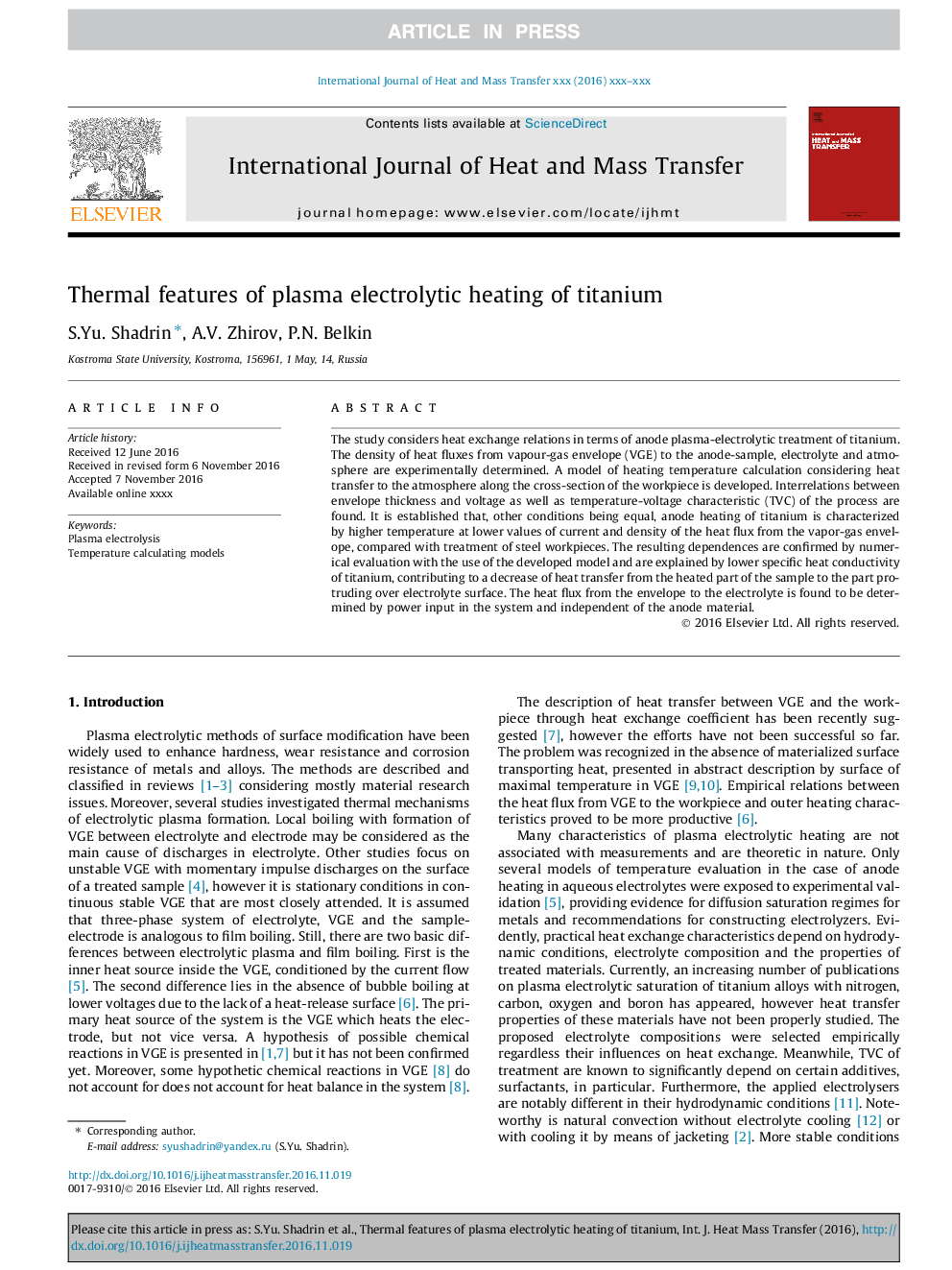| Article ID | Journal | Published Year | Pages | File Type |
|---|---|---|---|---|
| 4994659 | International Journal of Heat and Mass Transfer | 2017 | 6 Pages |
Abstract
The study considers heat exchange relations in terms of anode plasma-electrolytic treatment of titanium. The density of heat fluxes from vapour-gas envelope (VGE) to the anode-sample, electrolyte and atmosphere are experimentally determined. A model of heating temperature calculation considering heat transfer to the atmosphere along the cross-section of the workpiece is developed. Interrelations between envelope thickness and voltage as well as temperature-voltage characteristic (TVC) of the process are found. It is established that, other conditions being equal, anode heating of titanium is characterized by higher temperature at lower values of current and density of the heat flux from the vapor-gas envelope, compared with treatment of steel workpieces. The resulting dependences are confirmed by numerical evaluation with the use of the developed model and are explained by lower specific heat conductivity of titanium, contributing to a decrease of heat transfer from the heated part of the sample to the part protruding over electrolyte surface. The heat flux from the envelope to the electrolyte is found to be determined by power input in the system and independent of the anode material.
Keywords
Related Topics
Physical Sciences and Engineering
Chemical Engineering
Fluid Flow and Transfer Processes
Authors
S.Yu. Shadrin, A.V. Zhirov, P.N. Belkin,
